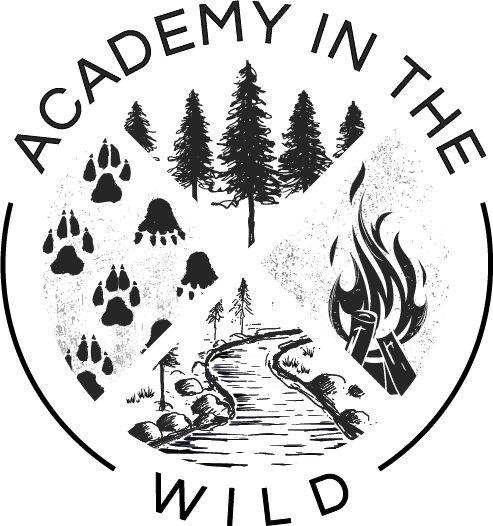“I believe the biggest risk our children Face today is never being exposed to risk”
– Evergreen Outdoor Education
Despite the countless research that tells parents how good it is for their children to spend time playing outside, they are spending more time indoors than ever before. We are such a risk averse society that often children are wrapped in cotton wool to ensure they come to no harm, but this also denies them the opportunities of so much growth.
Children need to take some risks. As parents, this makes us anxious; we want our children to be safe. But if we keep them in bubbles and never let them take any risks, they won’t know what they can do — and they may not have the confidence and bravery to face life’s inevitable risks. Yes, you can can get hurt from climbing a tree or hammering nails and running at high speeds through the woods. But that doesn’t mean you shouldn’t do it; the lessons we learn from failure are just as important, if not more, than what we can learn from success.
WHAT IS RISKY PLAY
It is a natural thing for all kids, it a thrilling and exciting activity that involves some risk level of physical injury. It is play that provides opportunities for challenge, testing limits, exploring boundaries and learning about injury risk.
BENEFITS OF RISKY PLAY
Risky play has been widely acclaimed throughout the world as imperative to raising a mentally healthy child.
Countless research states it’s essential to help children develop their emotional and mental resilience, risk-assessment skills, self well-being, good decision making, all while promoting better communication. It teaches children how their bodies can work, what they are capable of,
and creates a fundamental foundation for them to grow on.
Canada Health Association said “Access to unstructured play is affected by the emphasis placed on structured extra-curricular activities and academics, which parents often prioritized before play. In addition, municipalities and school boards implement strategies to reduce the likelihood of all play-related injuries, which constrain children’s play experiences and associated benefits.”
Harvard Medical School teaches “skills that help us plan, prioritize, troubleshoot, negotiate, and multitask are crucial for our success. These are skills that must be practiced to be learned – and to do this, children need unstructured time outdoors. They need time and space to be alone, and with other children, and to be allowed (perhaps forced through boredom) to make up their own games, figure things out, and amuse themselves. Being outside gives them opportunities to practice these important life skills”
WHAT RISKY PLAY LOOKS LIKE AT OUR FOREST SCHOOL
THE ONLY WAY TO LEARN TO MAKE GOOD DECISIONS IS BY PRACTICING MAKING DECISIONS
Forest and Nature Schools are one approach to encouraging unstructured outdoor play. we allow the children to play at heights (eg, climbing trees, jumping from stumps). running fast through the woods, playing in all weathers, playing with tools (under supervised guidance), playing with dangerous elements (fire, water, animals), rough and tumble, playing in secret or unexplored spaces.
Of course, all outdoor play has its inherent risks of falling, cuts and bruises, sun exposure, most minor injuries; we support opportunities for risk in children’s play. We also maintain our duty of care to children and families. We do this through working with and empowering children to listen to their bodies, and work with them to understand, assess, and mitigate risk themselves
HOW WE MANAGE RISKY PLAY
RISK IS NOT NECESSARILY A DANGER TO BE AVOIDED BUT RATHER A SKILL THAT NEEDS TO BE MANAGED
We decide upon actions and boundaries for the children (eg. don’t go anywhere you cant see one of your leaders, listen to your body to learn your limits, we have a “call” making children know to return to us quickly if needed, careful oversight where tools are involved….)
“I can help you with my words but not my hands”
As parents and caregivers of youth we often have that very natural knee jerk reaction of “be careful!” “Watch out!” “Don’t…!” At Academy in the Wild we try to give them more specific direction to help them manage and build their risk assessment skills.
For example, sticks, bats, icicles, rocks or anything else that is being swung, thrown, whacked or smashed. Instead of “be careful” we might say….
• “What’s your plan with that big stick?”
• “Give yourself space when you swing that around.”
• “Do you think that big sticks need big spaces?”
• “Before you throw that, take a look around you.”
When dealing with any sort of climbing situation whether it is trees, fences or other
• “Do you feel safe there?”
• “What’s your next move?”
• “Does that branch feel strong?”
• “I’m here if you need me.”
• “Take your time.”
• “Using two hands helps you hold on tight.”
As parents we often allow our own fears to stifle the many benefits of risky play when that play becomes outside our personal comfort zone. However If our children are not allowed to test limits, make good decisions, and learn for themselves all while young, they still will, just later on when the natural consequences can be much more severe to every aspect of their life than a few scrapes, bruises and cuts. Overly Intervening in risky play or unstructured play limits children’s right to play and their ability to learn how to safely navigate everyday risks. It also limits their ability to feel the joy and sense of accomplishment that comes from succeeding and overcoming adversity.
Many people who have failed due to taking risks have subsequently succeeded. As the brain is rigged for error-based learning, so why shouldn’t we become better at experimenting rather than trying to avoid failure!
